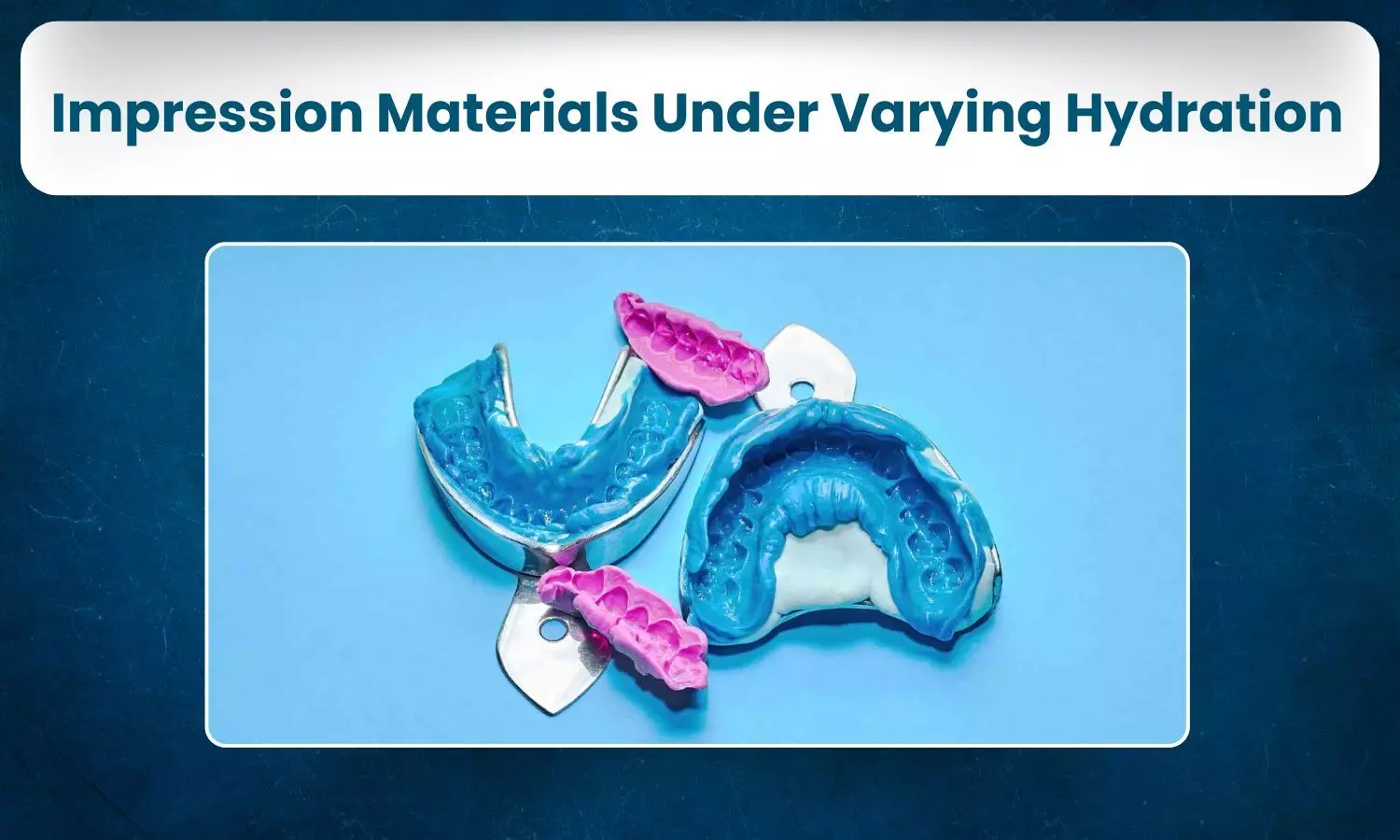Comparative In-Vitro Analysis Highlights Performance of Impression Materials Under Varying Hydration
- byDoctor News Daily Team
- 16 October, 2025
- 0 Comments
- 0 Mins

Himachal Pradesh:A recent study published in theDental Journal of Advance Studiesfound no statistically significant difference in dimensional stability between addition silicone and condensation silicone impression materials when compared to control measurements. However, addition silicone demonstrated superior surface detail reproduction compared to condensation silicone. Elastic impression materials are essential tools in dentistry for creating negative replicas of teeth and surrounding structures, especially for cast restorations. From this negative impression, a positive replica, or cast, is produced. This cast must be an exact and accurate form of the prepared tooth and should be free of bubbles, particularly around the cervical margins.In this study, the research team aimed to assess whether different conditions such as dry, moist, and wet, have any effect on the reproducibility of two different vinyl polysiloxane (VPS) impression materials. This in vitro study compared addition silicone and condensation silicone impression materials (VPS) using 120 samples, each fabricated as 3 mm thick discs. Impressions were made on a stainless steel die engraved with precise reference lines, in accordance with ANSI/ADA Specification No. 19. The materials were tested under three conditions: dry, moist (die exposed to a homogeneous mist of artificial saliva at 32 ± 2°C), and wet (die soaked in water during application). Dimensional accuracy, dimensional stability, and surface detail reproduction were measured for the two materials. The key findings from the study include: Highlighting the clinical relevance of these findings,Col (Dr) Prof Manjit Kumar, Department of Prosthodontics, Bhojia Dental College and Hospital, Baddi, Himachal Pradesh, Indiacorresponding author of the study, stated, “The findings of this study have direct clinical relevance in material selection. In terms of dimensional accuracy, addition silicone produced better detail reproduction compared to condensation silicone, particularly in dry conditions. Regarding dimensional stability, although statistical analysis revealed non-significant differences, the numerical values indicated that wet condensation silicone showed the least stability. For surface detail reproduction, moist addition silicone performed best, suggesting that minimal moisture presence may support better surface recording, whereas excessive moisture adversely affects detail reproduction.” Expanding on the implications, Col (Dr) Prof Manjit Kumar emphasized the need for further exploration. “Since addition silicone demonstrated superior dimensional stability, further research should focus on evaluating its behavior in actual oral conditions—considering intraoral temperature, humidity, and patient-specific variations. Such studies could pave the way for the development of more refined impression materials that perform optimally in real clinical environments.” The study reinforces the superior performance of addition silicone in terms of dimensional accuracy and surface detail reproduction, particularly under dry conditions. While no significant differences were found in dimensional stability between the materials, moisture was shown to adversely affect detail reproduction. These findings highlight the importance of selecting the right impression material and maintaining optimal conditions to ensure precise clinical outcomes. Reference:Kaur, M., Kalra, T., Kumar, M., Bansal, A., Avasthi, A., & Thakur, S. (2025). An In Vitro Study to Examine the Comparative Accuracy and Stability of Elastomeric Impression Materials under Different Levels of Hydration. Dental Journal of Advance Studies, 13(1), 1-7.
Disclaimer: This website is designed for healthcare professionals and serves solely for informational purposes.
The content provided should not be interpreted as medical advice, diagnosis, treatment recommendations, prescriptions, or endorsements of specific medical practices. It is not a replacement for professional medical consultation or the expertise of a licensed healthcare provider.
Given the ever-evolving nature of medical science, we strive to keep our information accurate and up to date. However, we do not guarantee the completeness or accuracy of the content.
If you come across any inconsistencies, please reach out to us at
admin@doctornewsdaily.com.
We do not support or endorse medical opinions, treatments, or recommendations that contradict the advice of qualified healthcare professionals.
By using this website, you agree to our
Terms of Use,
Privacy Policy, and
Advertisement Policy.
For further details, please review our
Full Disclaimer.
Recent News
Health Ministry Proposes Barcoding Rule for All Va...
- 23 October, 2025
Boehringer Ingelheim Jascayd gets nod in China for...
- 23 October, 2025
Mizoram reports 121 multidrug-resistant TB Deaths...
- 23 October, 2025
GSK Shingrix new prefilled syringe presentation ge...
- 23 October, 2025
Daily Newsletter
Get all the top stories from Blogs to keep track.


0 Comments
Post a comment
No comments yet. Be the first to comment!